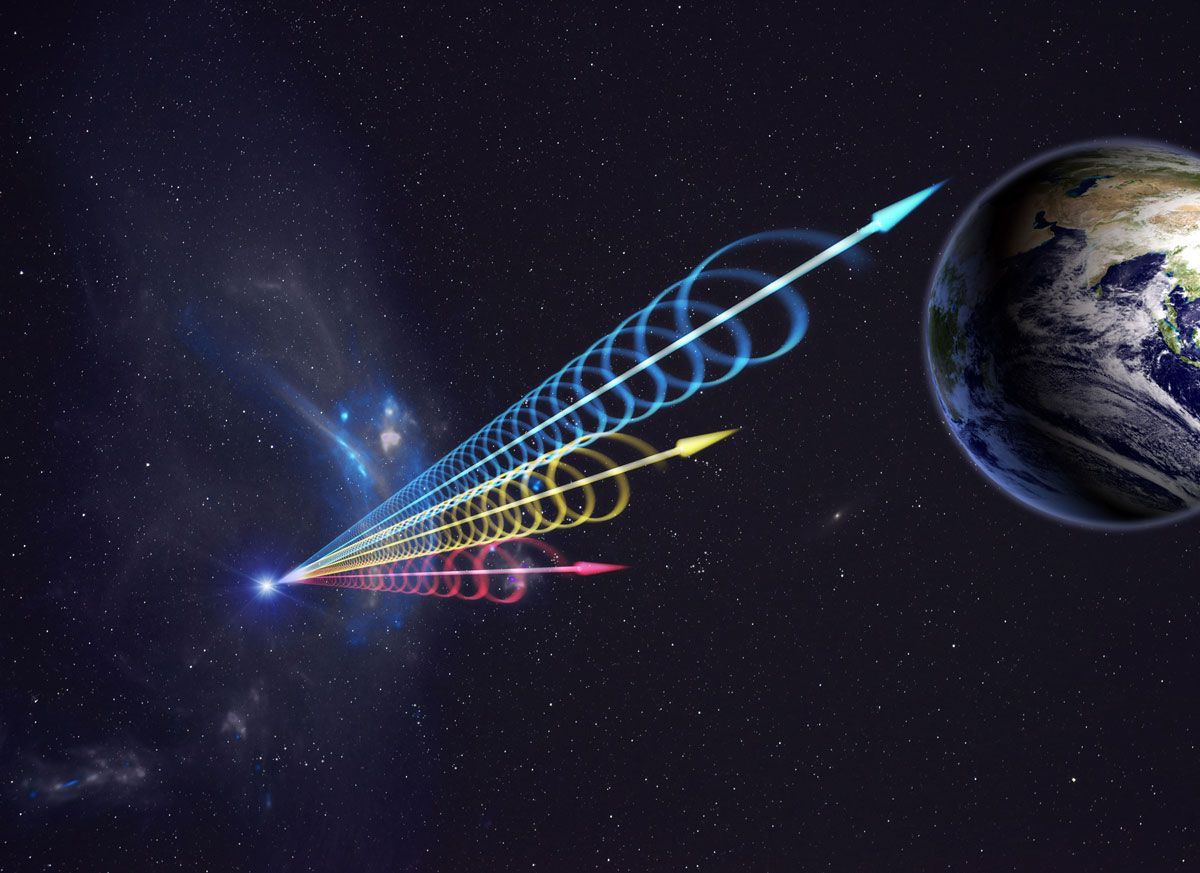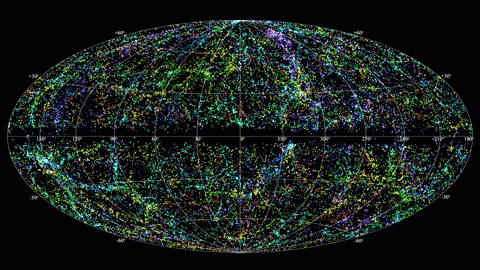Where do these 10,000 fast radio bursts detected daily in the Universe come from?
Follow us on Google News (click on ☆)

Artist's impression of a fast radio burst reaching Earth.
Credit: Jingchuan Yu, Beijing Planetarium
Among these FRBs, a minority reappears regularly, while the majority manifests only once. This discrepancy has led scientists to explore potential mechanisms behind these bursts. Researchers at the University of Toronto used the Canadian Hydrogen Intensity Mapping Experiment (CHIME) to study the properties of polarized light from 128 non-recurrent FRBs. They found that these unique bursts seem to come from galaxies similar to our Milky Way.
Ayush Pandhi, a doctoral student at the Dunlap Institute for Astronomy and Astrophysics, emphasizes that the polarized light of FRBs offers clues about their origins. Unlike stars, FRBs emit polarized light, oriented in a specific direction. This polarization could reveal the mechanism of their emission and the environments they traverse before reaching Earth.
The study has filled a gap in FRB non-recurrent research, which is often more difficult to observe than their recurrent counterparts. Telescopes must cover vast areas of the sky to capture these fleeting signals, a task made easier by CHIME.
The findings reveal that non-recurrent FRBs pass through less extreme environments than recurrent ones, which often originate from turbulent zones like supernova remnants. This weaker polarization of non-recurrent FRBs could indicate less intense magnetic fields or less dense material around them.

Fast radio bursts light up the sky above Earth.
Credit: NRAO Outreach/T. Jarrett (IPAC/Caltech); B. Saxton, NRAO/AUI/NSF
Pandhi mentions that this research could rule out certain theories about the objects behind FRBs, such as highly magnetized neutron stars known as pulsars. The notable difference between the polarization of FRBs and that of pulsars suggests distinct mechanisms.
Pandhi's team continues to refine the understanding of these mysterious bursts, aiming to distinguish the polarization of FRBs originating from the Milky Way from those coming from other galaxies. These efforts seek to elucidate the mechanisms behind FRBs, a puzzle that fascinates and motivates researchers to uncover the secrets of these cosmic explosions.